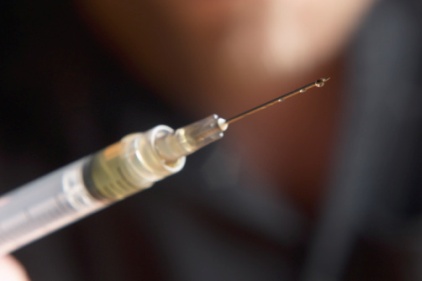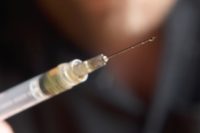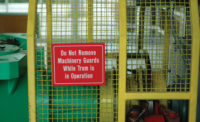 Occupational Safety and Health Administration (OSHA) fines for bloodborne pathogen (BBP) exposure violations at one worksite can exceed $160,000. To reduce fines and protect employees from the spread of BBPs, Cintas Corporation (NASDAQ: CTAS), a leader in first-aid and safety, today identified essential steps for reducing the impact of a BBP emergency. To improve BBP safety efforts, Cintas is offering customers free BBP training with the purchase of any instructor-led training course.
Occupational Safety and Health Administration (OSHA) fines for bloodborne pathogen (BBP) exposure violations at one worksite can exceed $160,000. To reduce fines and protect employees from the spread of BBPs, Cintas Corporation (NASDAQ: CTAS), a leader in first-aid and safety, today identified essential steps for reducing the impact of a BBP emergency. To improve BBP safety efforts, Cintas is offering customers free BBP training with the purchase of any instructor-led training course.
Although invisible to the human eye, BBPs present serious risks for workplaces, like the spread of diseases such as HIV, Hepatitis B and Hepatitis C,’ said Nancy Petersen, Senior Marketing Manager Cintas. It’s important for employees, especially first responders such as janitorial and industrial workers, to learn the dangers of BBPs and the proper protocols for limiting exposure risk and handling incidents.
The top steps for minimizing the impact of BBPs include:
1. Create an exposure control plan Exposure control plans outline occupational risks, prevention techniques like the use of PPE and emergency procedures. To draft it, get insight from employees across different job functions to determine hazards they may face.
2. Train employees Any employee who may come into contact with blood or certain bodily fluids as part of their job duties needs to complete annual BBP training. Make sure new employees complete this training as well. Classroom, DVD and online training should highlight modes of BBP transmission as well as information included in the exposure control plan. It’s also beneficial to offer training that includes hands-on skills checks to ensure pathogens have been isolated.
3. Encourage use of Personal Protective Equipment (PPE) PPE such as gloves, eye shields, gowns and masks, creates a barrier between an individual and bloodborne pathogens. Make sure proper PPE is available and employees wear PPE when required, yet remove it before leaving work areas. Replace PPE when it wears out or is unfit for use.
4. Keep clean-up kits onsite In the event of a BBP incident, first responders will need to find a clean-up kit as soon as possible. These kits include instructions, additional PPE, paper towels and antiseptic wipes, biohazard bags and absorbent powders or pads. Place these kits and signage throughout the workplace in accessible and visible areas.
5. Call for immediate medical support In the event of a BBP incident, report the event to a supervisor before assisting the victim so that they can arrange for immediate medical evaluation. Wash the wound and other contaminated areas on the skin with soap and water, and flush eyes if necessary. Then, help the victim get to a medical professional to be inspected more thoroughly.
6. Clean affected work areas Remove blood or other fluids from work areas with absorbent materials, and then apply an appropriate disinfectant. Afterwards, properly dispose of waste by securely sealing it in biohazard bags and labeling it as hazardous.
Safety directors need to understand that exposure to BBPs isn’t limited to hospital settings,’ added Petersen Although these accidents occur without warning, with precautions in place and thorough training, employees can feel more at ease and businesses can reduce the opportunity for an exposure.’
For more information on the free Bloodborne Pathogens training from Cintas, please visit www.cintas.com/BBPtraining.
About Cintas Corporation
Headquartered in Cincinnati, Cintas Corporation provides highly specialized services to businesses of all types primarily throughout North America. Cintas designs, manufactures and implements corporate identity uniform programs, and provides entrance mats, restroom cleaning and supplies, tile and carpet cleaning, promotional products, first aid, safety, fire protection products and services and document management services for more than 1 million businesses. Cintas is a publicly held company traded over the Nasdaq Global Select Market under the symbol CTAS and is a component of the Standard & Poor’s 500 Index.






